River Dragons is a cheeky and versatile puzzle that can entertain anyone
When reaching for a lighter game to introduce new friends to the hobby, classic choices like Catan and Ticket to Ride remain the go-to options. There are plenty of other gateway games however, and an often overlooked entry that was first released back in the year 2000 was River Dragons.
Games that are verging on twenty years of age rarely get a look in these days, but thanks to a recent reprint by Matagot, River Dragons has a fresh lick of paint and a component upgrade that make it a beautiful addition to your collection. With such production quality evident, my only real concern was whether the gameplay would stand up against modern competition.
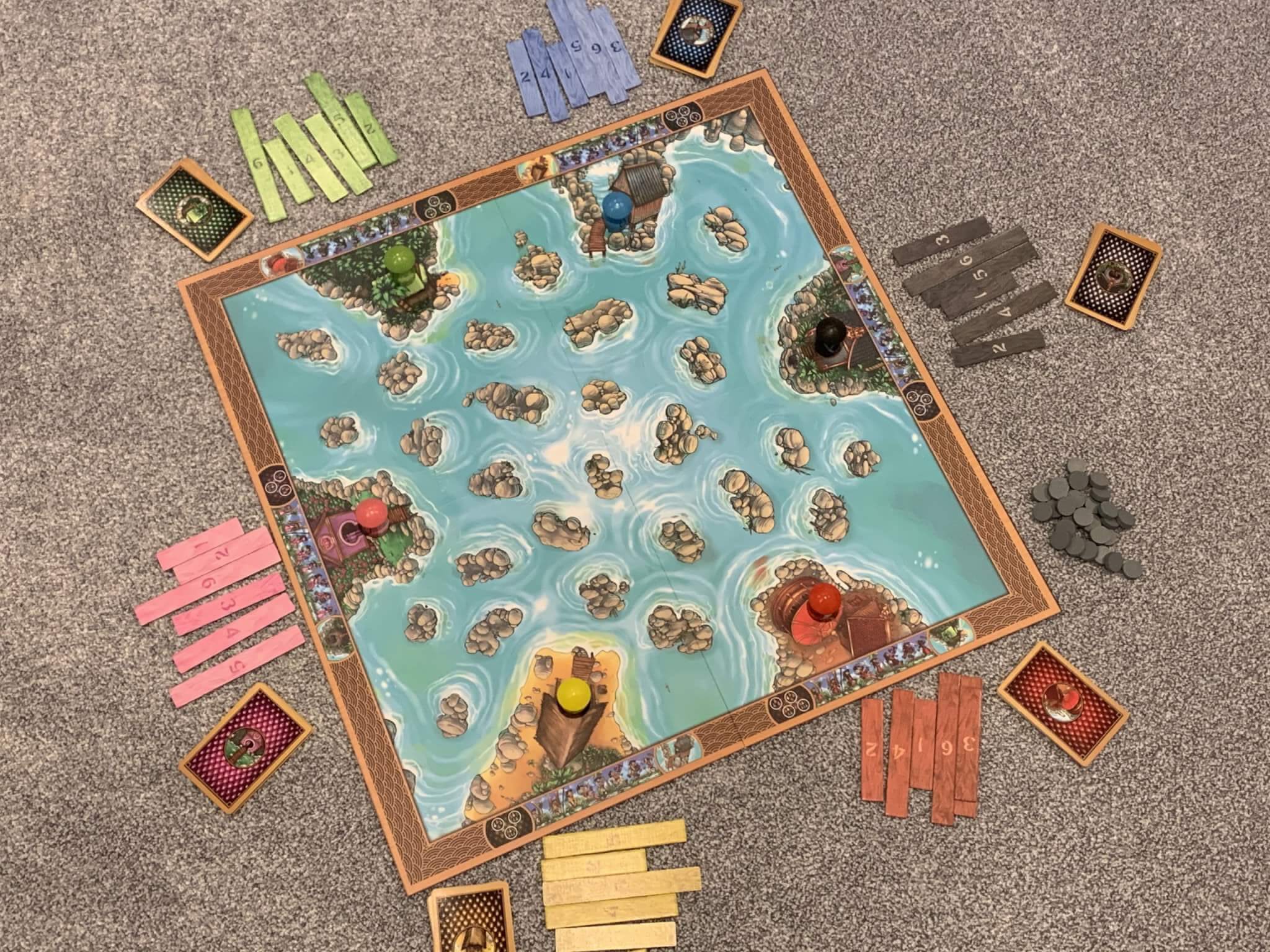
As a concept, River Dragons is very simple — each player must simply cross the rver to the opposite side by throwing stones into the water and then placing planks from one stone to another. To do this, the players will program five turns at a time by placing cards from their hand onto the table face down, which will then be resolved one card at a time.
Of course, the game isn’t as simple as placing five cards and then claiming the win by default. This is mostly because there are a few ways that the players can interact with each other, both directly and indirectly. Firstly, each player has a deck of between nine (in a two-player game) and thirteen cards (in a six-player game), so there’s no guarantee that the players will all choose to use the same five cards.
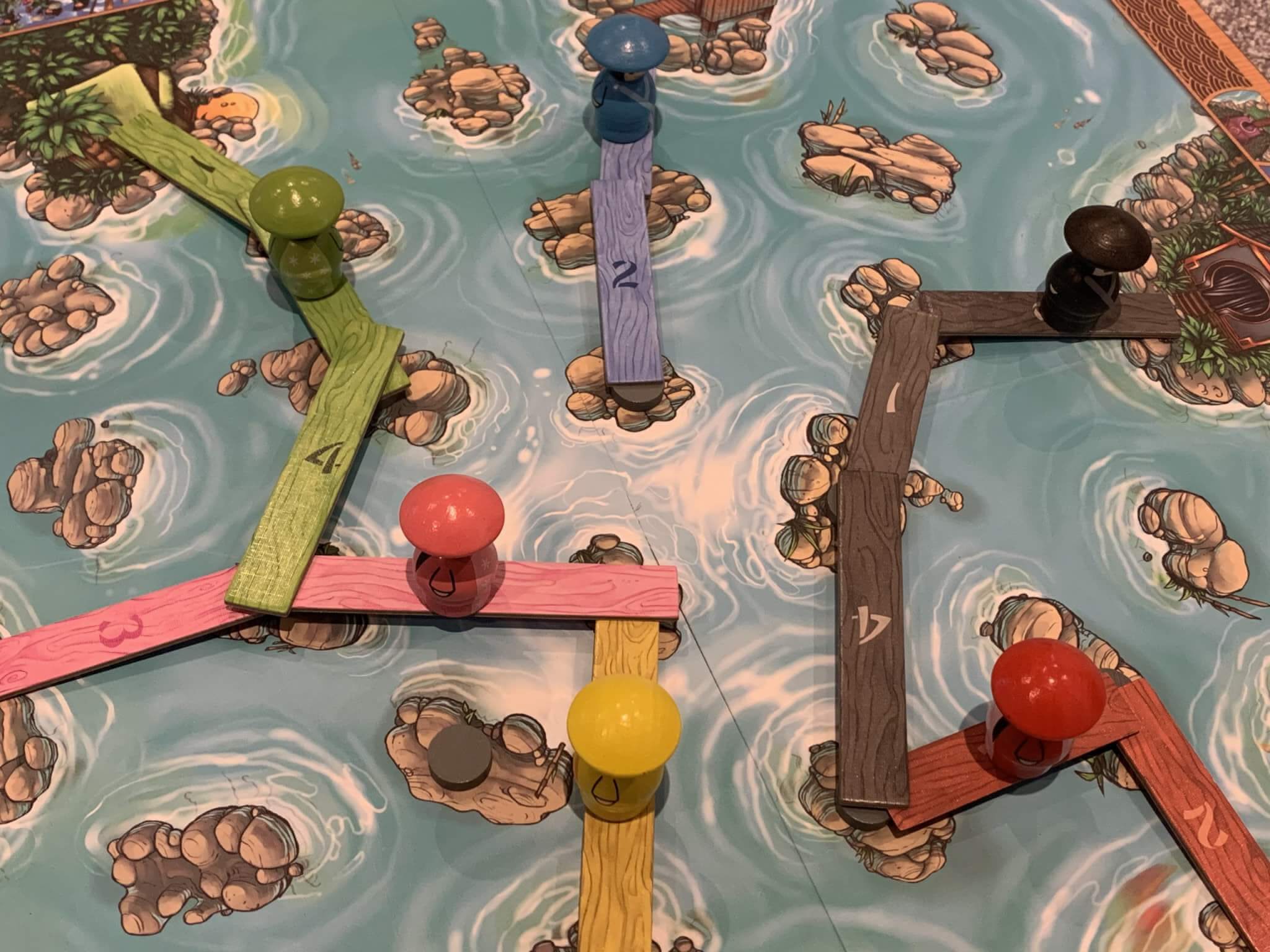
Among the cards in their deck, each player has the ability to play a river dragon card for each opponent, which in turn cancels that opponents card for the same action space — so for example if the blue player uses their red river dragon card in slot three, then the red player (who is the only player affected) will have to skip their third action.
Another, slightly-less direct method of messing with your opponents is by playing a card that allows you to pick up a plank. This literally means that you can pick up a plank (certain rules must be followed) to take back to your own hand. One key rule here is that each player can only have one plank of each length (there are six lengths) which ensures no one unfairly hoards planks.
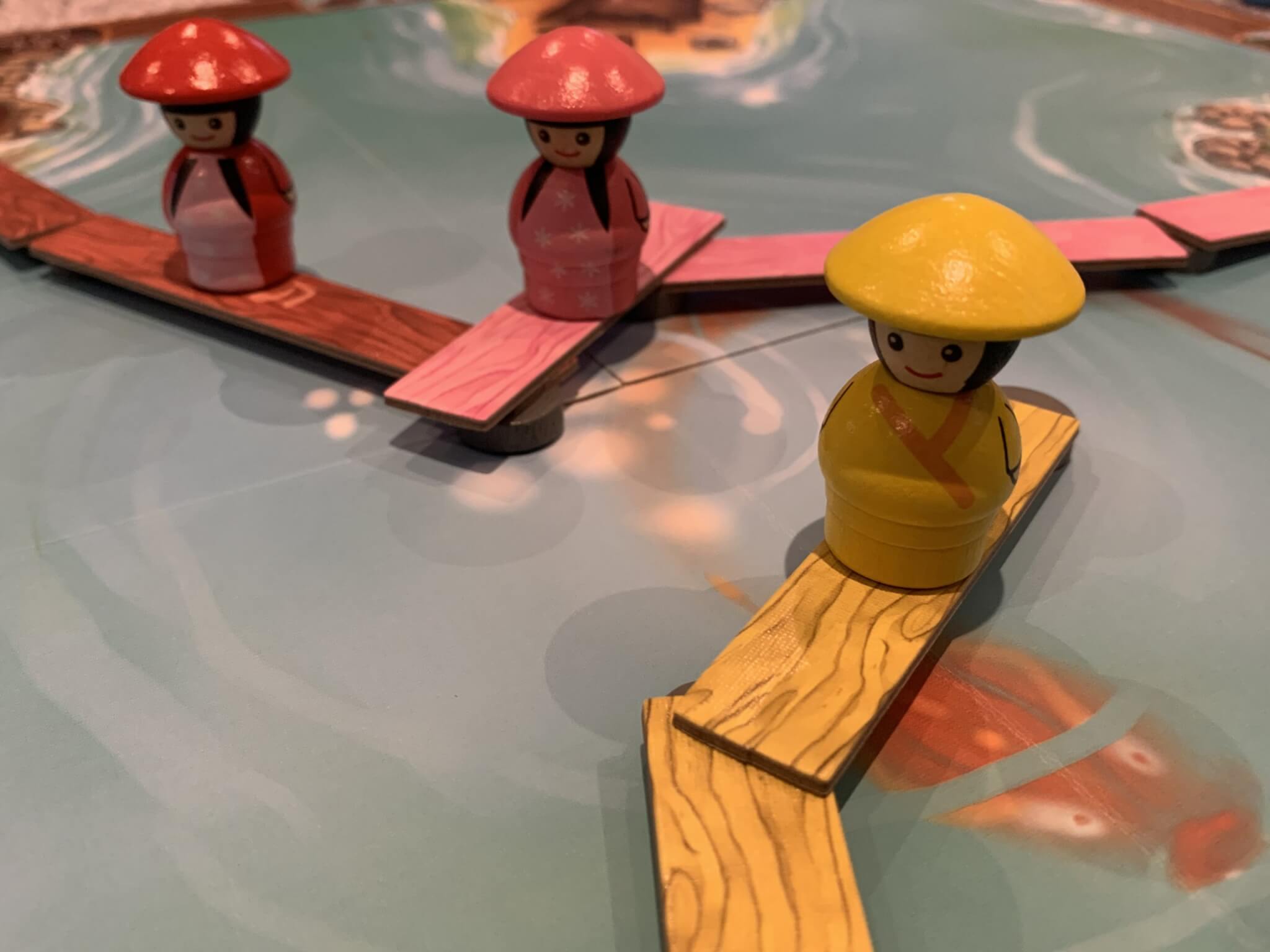
Finally, only certain cards allow players to pass other players. So whilst one viable strategy is to go straight towards the opposite shore, you may also find that you clash with your opponent doing the same thing, and unless a jump card is used at the right time, you’ll end up stuck. It’s also important to note that players must usually resolve their cards when flipped or lose their turn, even if the effects are undesirable because the board state has changed — being forced to move backwards is a common example.
Other nuances to the gameplay exist to make things more difficult as well, including factors like each stone being able to accommodate only three planks, or planks not being able to cross each other. This sort of means that each game will begin with the players striking out towards the middle, then very likely being forced to work around and interact with each other by sharing stones, crossing each other’s planks and so on.
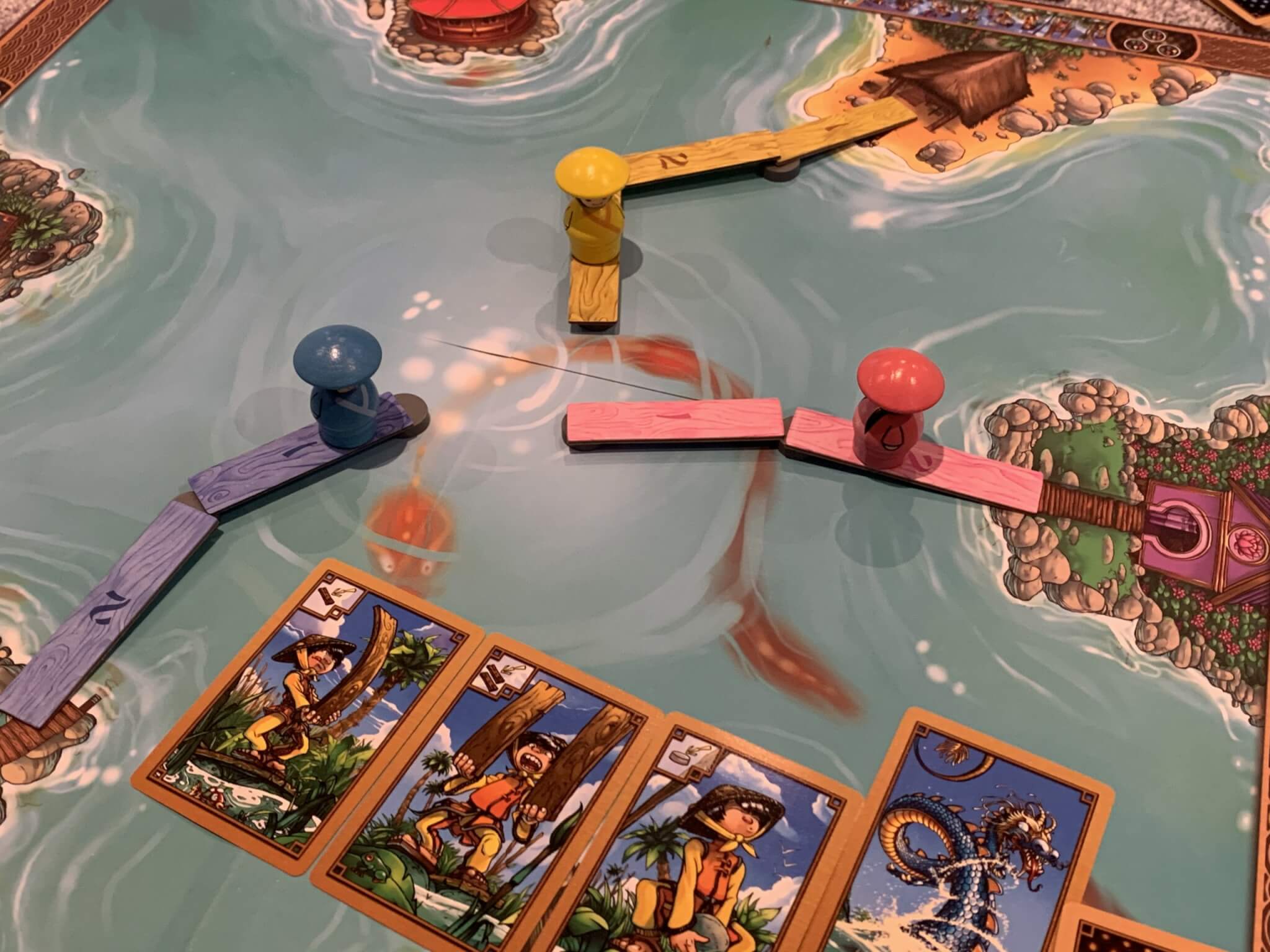
There are actually two ways to play River Dragons, with a basic side of the board intended for newer or younger players that show suggested rock placement spaces and a more advanced board that has no such assistance. Depending on which way you play, River Dragons may also include a guessing element that forced players to estimate how long the gap between stones either is or needs to be — then to place a plank accordingly.
With all of these different elements — programming, estimating, several flavours of Take That etc — you have a game that is a lot more thoughtful than it might first appear. Even so, it is incredibly simple and intuitive to learn and fast to teach. A game can last between about twenty and forty minutes depending mostly on player count, and as such, River Dragons can be used as either a filler game or as a casual game to be played with a few beers. The fact that it supports six players further adds to its versatility.
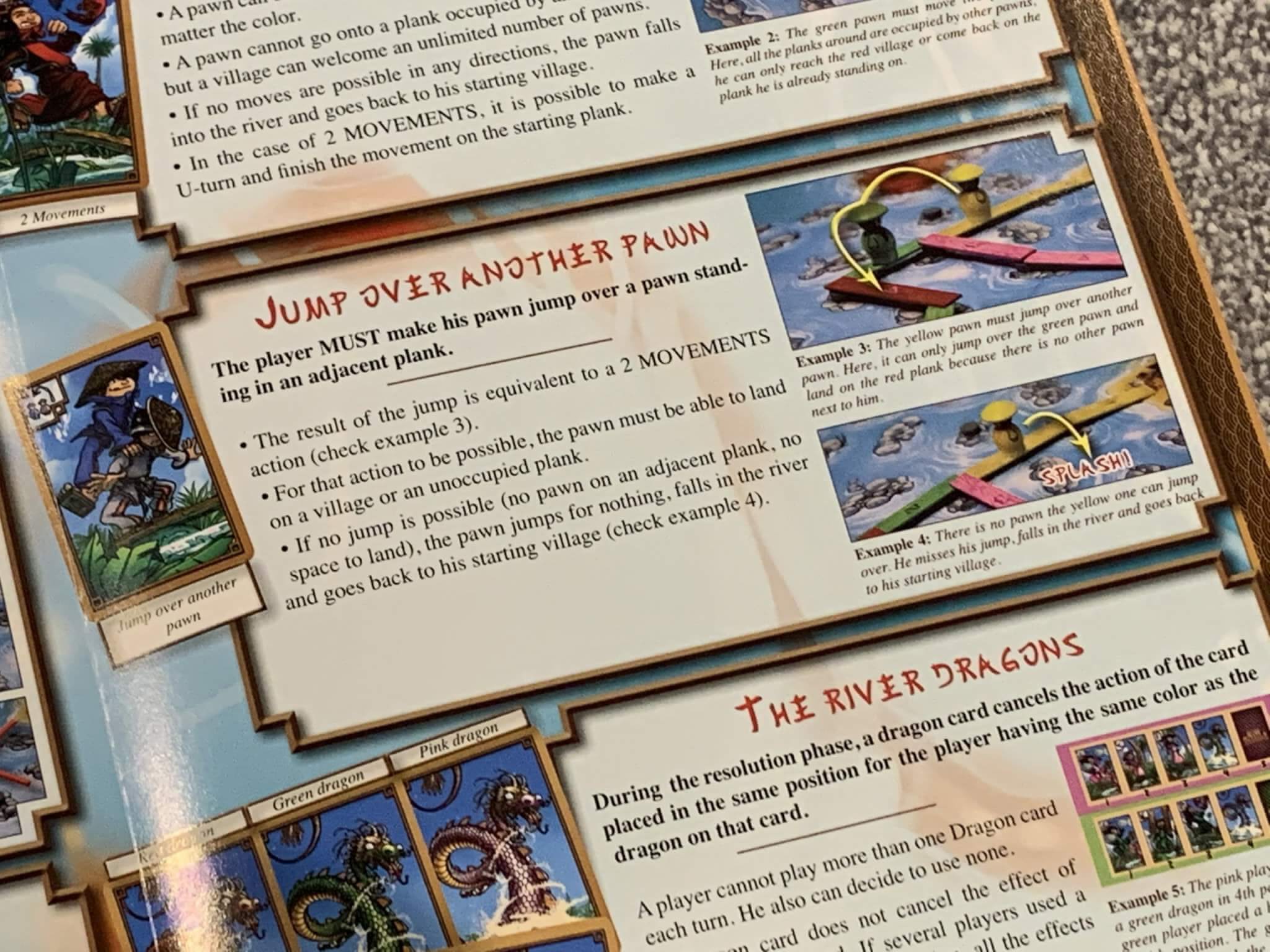
Having mentioned earlier that the build quality is good, I should also take a moment to call out some exceptional features. Firstly, the board and card artwork is really fantastic, with loads of cartoonish detail that brings the concept of the game alive. The symbology on the cards is present in its own section, meaning that even though the artwork is front and centre, it’s always possible to see the function of a card.
The stones are simply grey wooden circles, whilst the planks are appropriately coloured pieces cut to length and numbered accordingly. Whilst sort of unexciting in their own right, these components do the job well and look impressive when the board is actually built out during a game. The real stars of the show are the people tokens, each of which is painted in the relevant colour and includes facial and clothing details that match the art style — these little folks look fantastic!
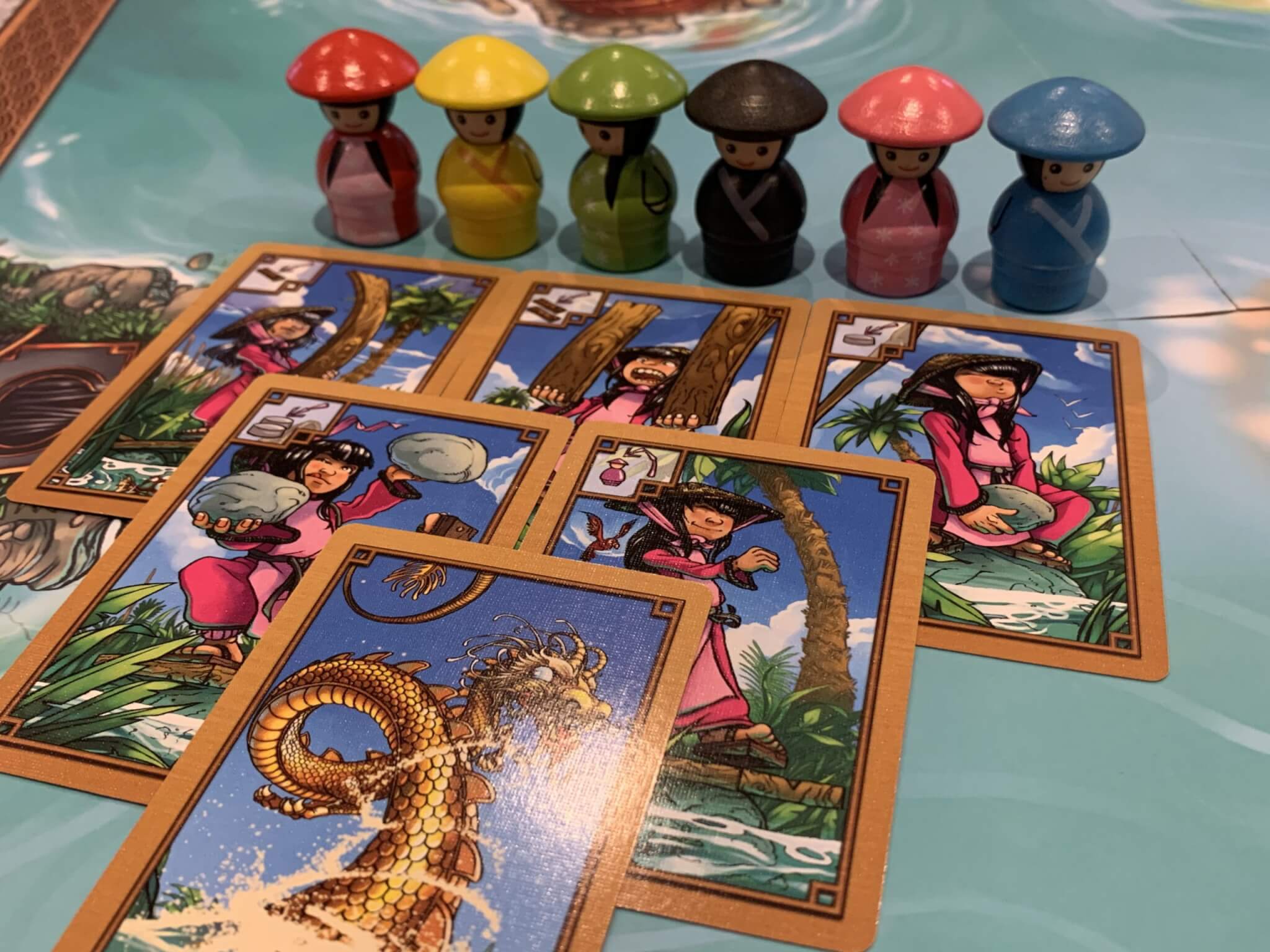
Overall then, River Dragons is both versatile and fun. It fits the niche required to be both party game and casual game, but it can also be taken seriously and played by more competitive gamers. At the same time, younger players tend to enjoy it, and there isn’t a person I tried it with who didn’t appreciate the gorgeous artwork. It would be hard to pick any fault, but I guess if there is one, it’s simply that it is a relatively short-lived experience that may be too straightforward for some. Personally, I think it’s a keeper!
You can purchase River Dragons on Amazon.
Love board games? Check out our list of the top board games we’ve reviewed.

Comments are closed.